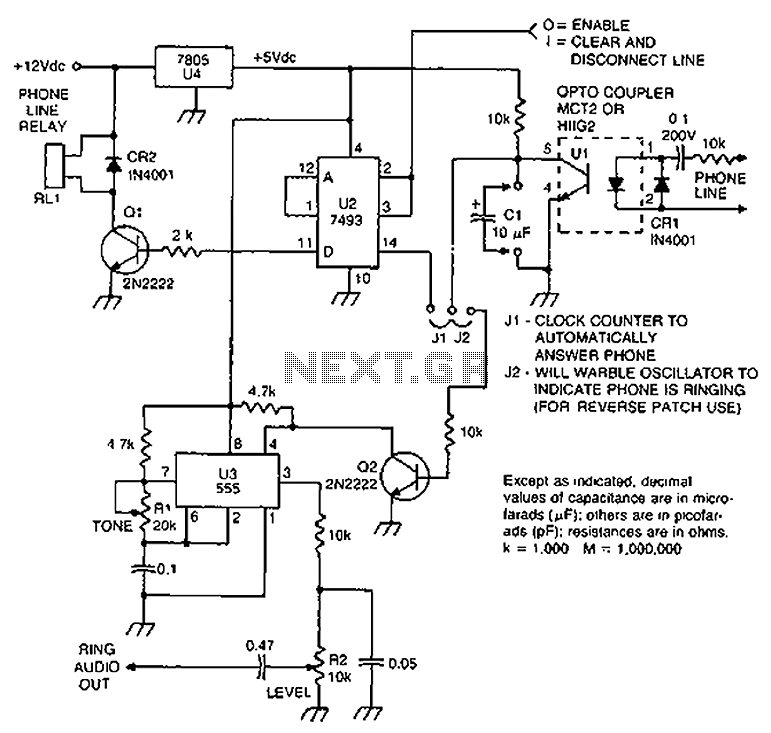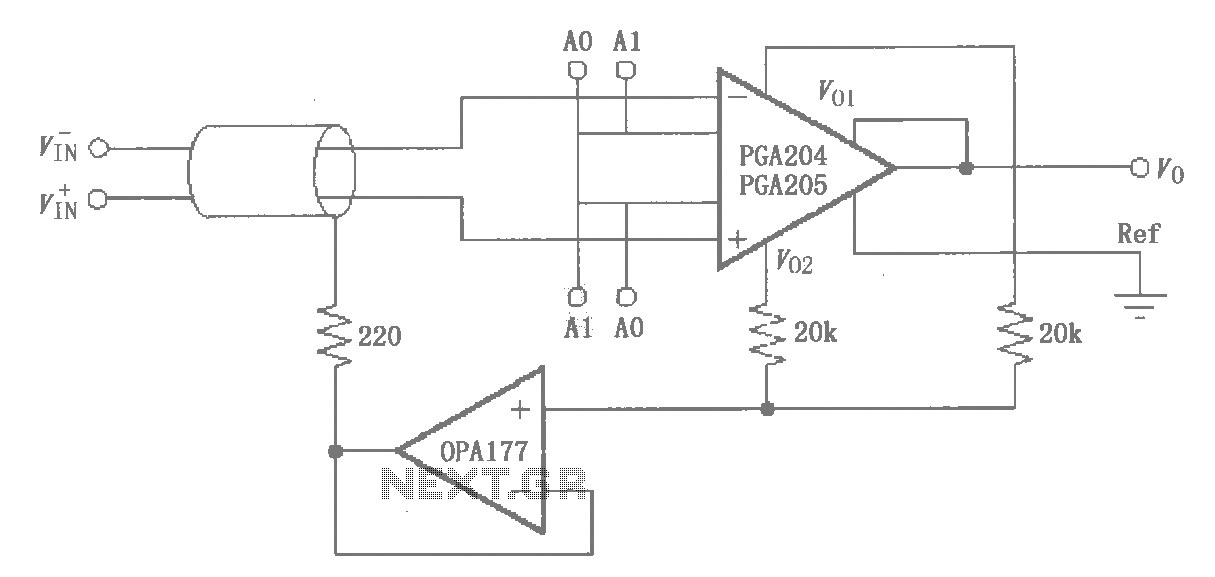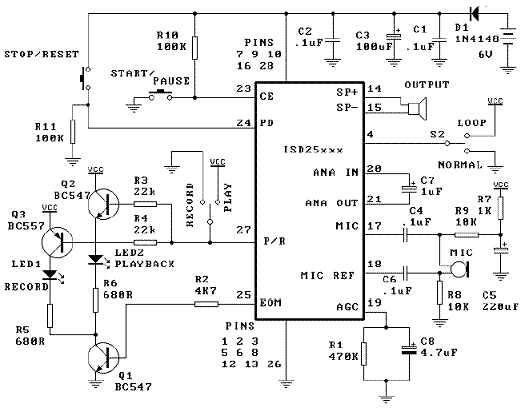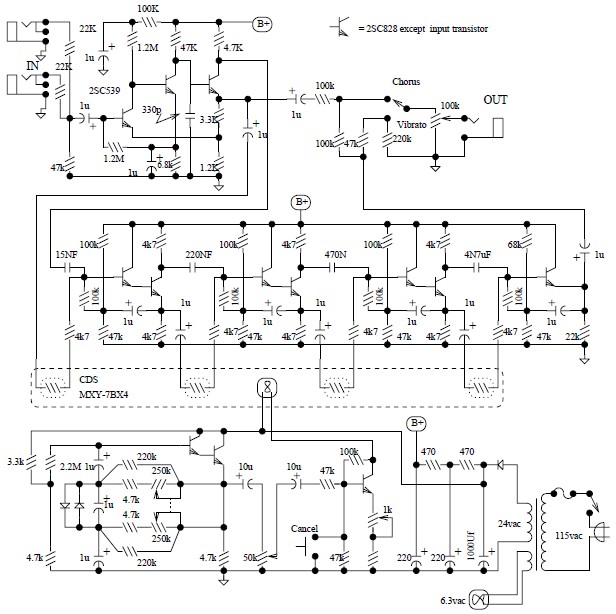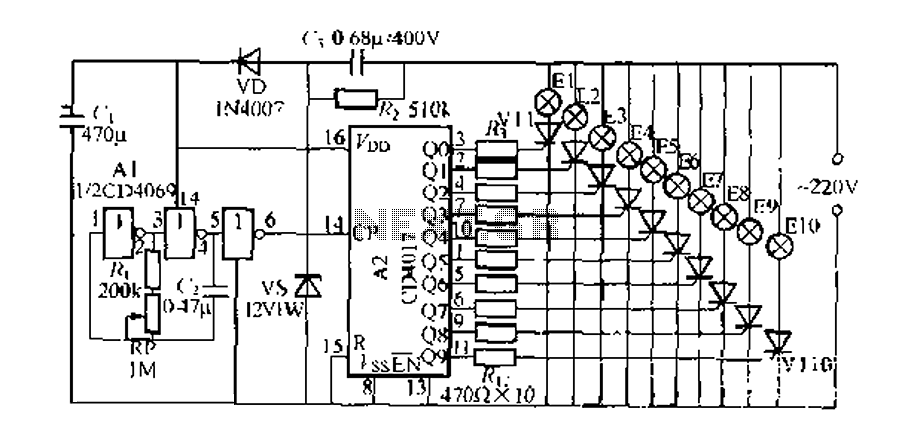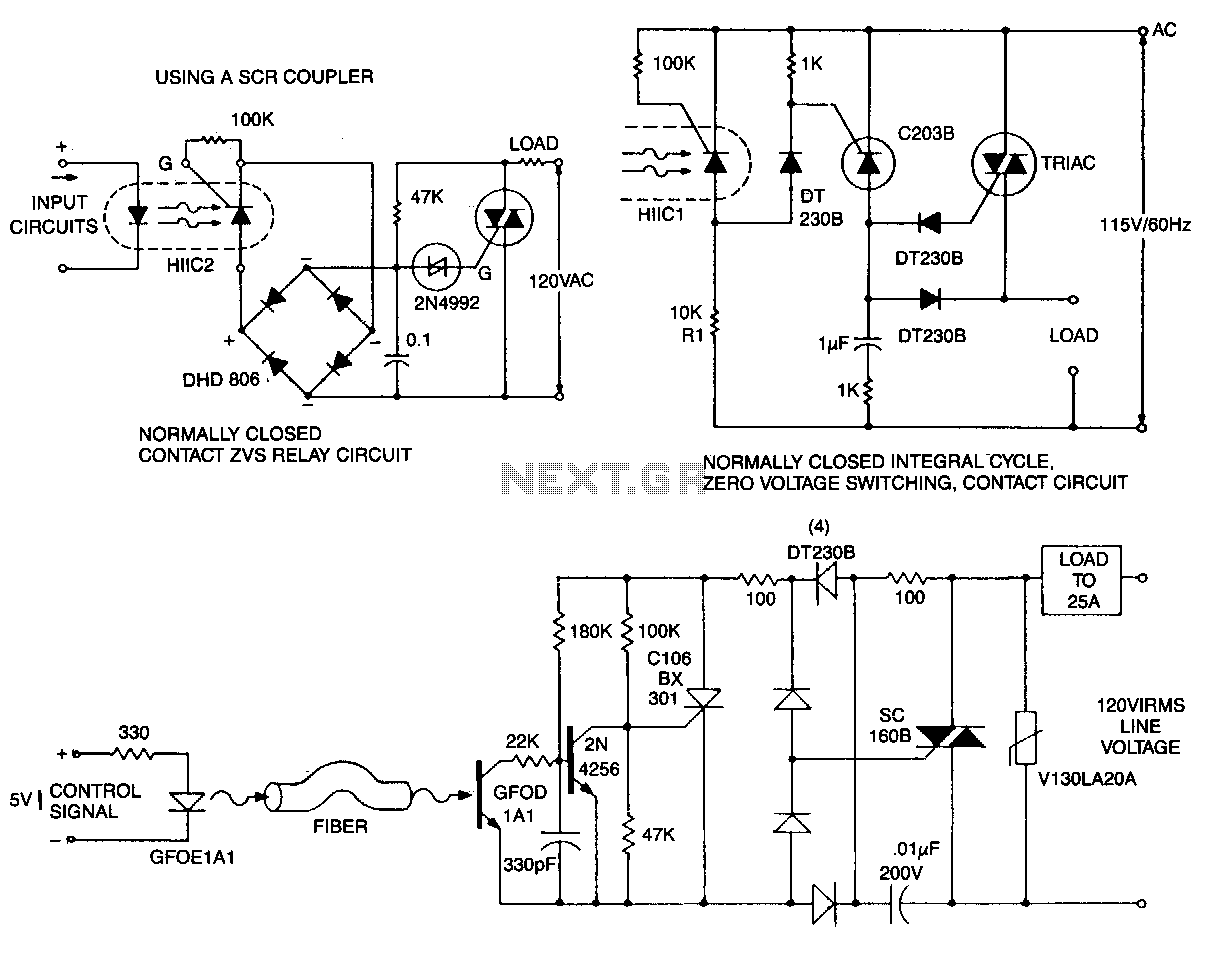
Alternator Regulator Circuit
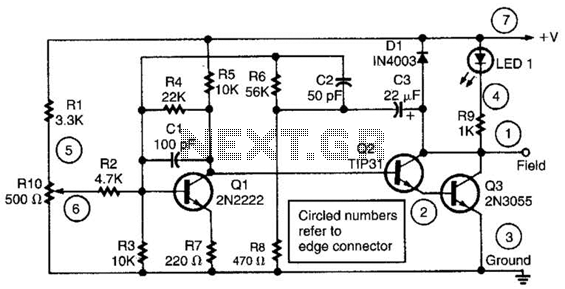
This alternator regulator utilizes a 3-transistor DC amplifier and is designed for a pulled-up field system, where one side of the alternator field returns to the +12V supply, and the other end is pulled toward ground. The circuit monitors the state of the battery through a resistive divider and adjusts the voltage at the field terminal accordingly.
The alternator regulator circuit operates by employing a 3-transistor DC amplifier configuration, which effectively manages the voltage supplied to the alternator's field winding. In this design, one terminal of the field winding is connected to the +12V supply, while the other terminal is grounded, creating a pulled-up field system. This configuration allows for efficient control of the magnetic field generated by the alternator, which in turn regulates the output voltage and current to charge the battery and power the vehicle's electrical systems.
The circuit's ability to monitor the battery state is crucial for maintaining optimal performance. It incorporates a resistive voltage divider that samples the battery voltage. The output from this divider provides feedback to the transistor amplifier, enabling it to adjust the field voltage dynamically. When the battery voltage drops below a predefined threshold, the regulator increases the voltage at the field terminal, enhancing the magnetic field strength and boosting the alternator output. Conversely, if the battery voltage exceeds the desired level, the regulator reduces the field voltage, preventing overcharging and potential damage to the battery.
Overall, this alternator regulator design ensures efficient charging, prolongs battery life, and maintains the reliability of the vehicle's electrical system by continuously adapting to changing conditions. This alternator regulator uses a 3-transistor dc amplifier, and is designed for a pulled up field system, where one side of the alternate field returns to the +12-Vsupply, and the other end is pulled toward ground. The circuit monitors the state of the battery through a resistive divider and causes the voltage to change at the field terminal. 🔗 External reference
The alternator regulator circuit operates by employing a 3-transistor DC amplifier configuration, which effectively manages the voltage supplied to the alternator's field winding. In this design, one terminal of the field winding is connected to the +12V supply, while the other terminal is grounded, creating a pulled-up field system. This configuration allows for efficient control of the magnetic field generated by the alternator, which in turn regulates the output voltage and current to charge the battery and power the vehicle's electrical systems.
The circuit's ability to monitor the battery state is crucial for maintaining optimal performance. It incorporates a resistive voltage divider that samples the battery voltage. The output from this divider provides feedback to the transistor amplifier, enabling it to adjust the field voltage dynamically. When the battery voltage drops below a predefined threshold, the regulator increases the voltage at the field terminal, enhancing the magnetic field strength and boosting the alternator output. Conversely, if the battery voltage exceeds the desired level, the regulator reduces the field voltage, preventing overcharging and potential damage to the battery.
Overall, this alternator regulator design ensures efficient charging, prolongs battery life, and maintains the reliability of the vehicle's electrical system by continuously adapting to changing conditions. This alternator regulator uses a 3-transistor dc amplifier, and is designed for a pulled up field system, where one side of the alternate field returns to the +12-Vsupply, and the other end is pulled toward ground. The circuit monitors the state of the battery through a resistive divider and causes the voltage to change at the field terminal. 🔗 External reference
Warning: include(partials/cookie-banner.php): Failed to open stream: Permission denied in /var/www/html/nextgr/view-circuit.php on line 713
Warning: include(): Failed opening 'partials/cookie-banner.php' for inclusion (include_path='.:/usr/share/php') in /var/www/html/nextgr/view-circuit.php on line 713
